

The 6 th Exhibition: 2013.4.20 - 2014.1.5
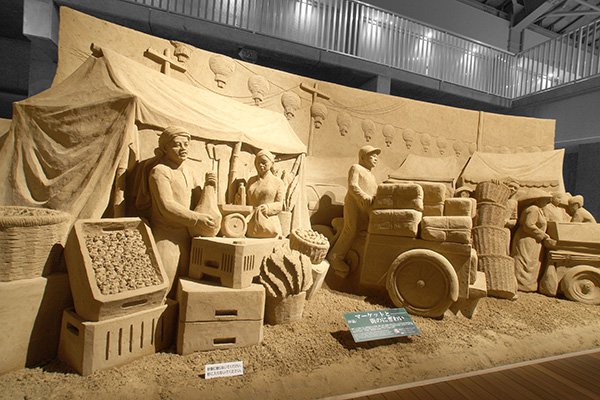
Markets and the crowded streets
In Southeast Asia, bustling markets selling everything from fresh produce to spices, general goods, clothes, folk crafts and food are held everywhere. These markets are made up of long lines of simple tents and stalls, and their lively streets also attract many tourists. They are one of the components that drive development in Southeast Asia.
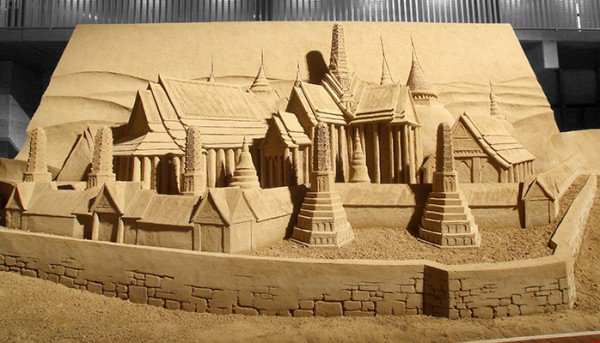
The palace of Bangkok and the view of Phra Nakhon
Thailand, located in the middle of Southeast Asia, has developed continually without ever having been colonized. At the heart of the country is the capital of Bangkok, thriving with energy and solemn Buddhist traditions, where history and culture of past and present coexist in beautiful harmony. In Phra Nakhon District, many historical buildings, such as the Grand Palace as well as old Buddhist temples, are concentrated
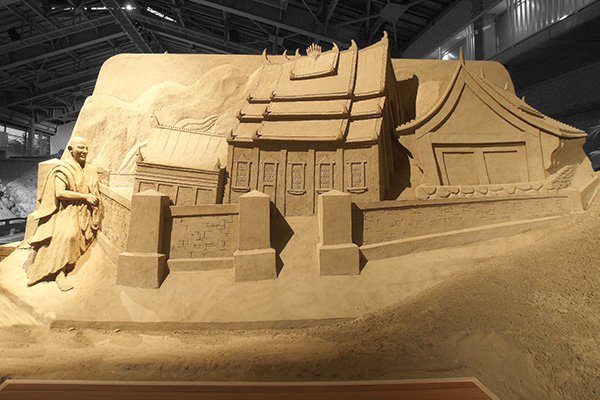
Wat Xengthong in the historic city of Luang Prabang
The city of Luang Prabang and its many temples are listed as a UNESCO World Heritage Site, with Wat Xieng Thong Temple being the most famous of these temples. It was built in 1560 and has been the site of coronation ceremonies of a long line of kings. Laos is a devout, mainly Theravada Buddhist country, and its temples are symbolic of its townscape as well as of the faith of its people.
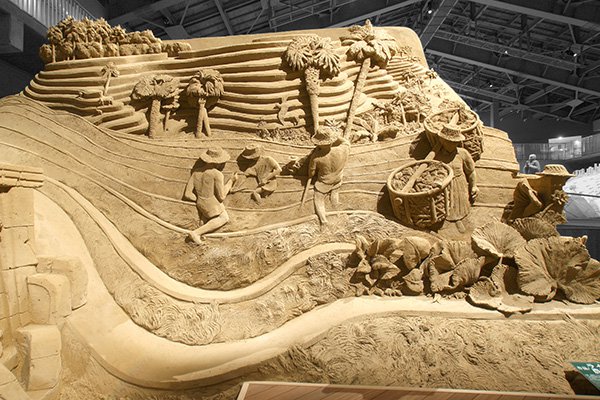
Peasantry and the Rice terraces
Since ancient times, many Southeast Asian cultures have cultivated rice and led farming lives. Even today, the countries of Southeast Asia remain the world's leading group of agrarian nations. The beautiful shape of water-covered rice terraces is also symbolic of the people of Southeast Asia who have created cultures living with water. The Rice Terraces of the Philippine Cordilleras were designated as a World Heritage Site in 1995.
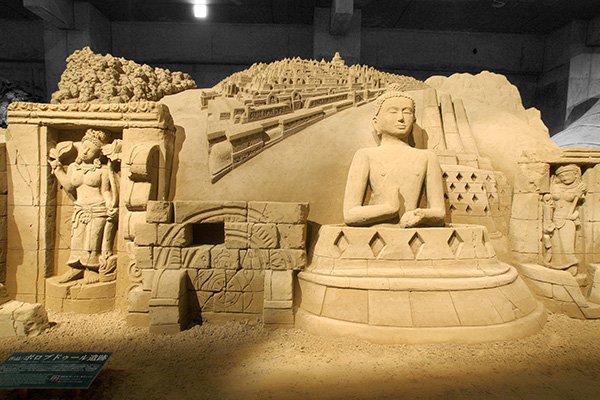
Borobudur Ruins -The ruin revived from 1000 years lost-
Borobudur is a temple site in Indonesia built during the 8th - 9th century by the Sailendra Dynasty. It is one of the world's biggest temple sites with a big stupa on its top reminiscent of a pyramid. Eventually, the dense surrounding jungle hid the temple site, and it remained forgotten for almost 1000 years until its rediscovery in 1814. There are different theories regarding the reasons for this, but the truth remains a mystery. In 1991, the temple compounds were listed as a World Heritage Site, becoming even more famous around the world.
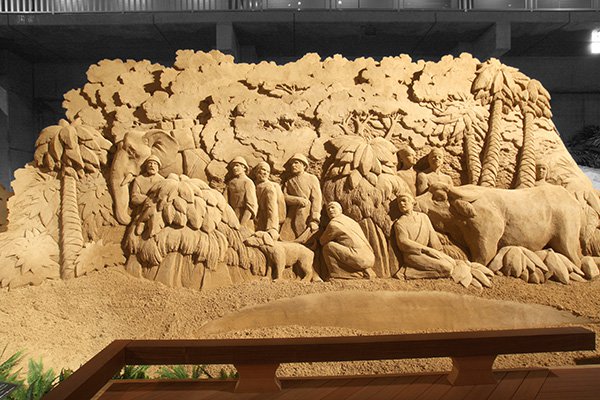
Europian explorer was happen to meet a mysterious civilization in the deep jungle
In 1814, English Governor-General of Java Thomas Raffles rediscovered Borobudur Temple Site in the middle of the jungle. In 1860, Angkor Wat, also surrounded by jungle, was visited by French explorer Henri Mouhot, and consequently became famous. For the West, both discoveries were a startling encounter with mysterious civilizations so far unknown to them. The explorers may even have seen the spirits of the dynasties who prospered there in the past.
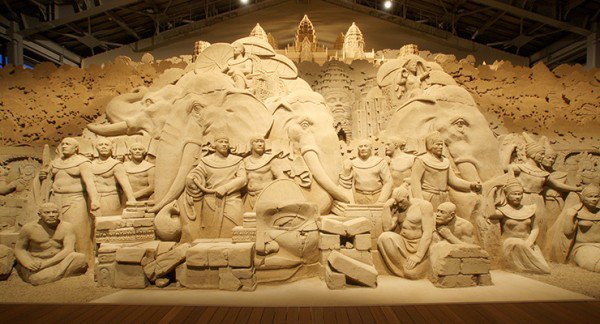
Parade of the King of Khumer Empire
From the 9th to 15th century, the Khmer Empire reigned supreme in Southeast Asia and boasted splendors rivaling the Roman Empire. Victorious troops used to pass through the "Gate of Victory", one of the five gates of Angkor Thom, returning triumphantly towards the Terrace of the Elephants to a joy-filled capital. Even today, the Angkor Sites are still breathing the splendor of proudly parading soldiers and Apsara dancers showcasing the prosperity of royal dynasties.

Angkor Wat
Angkor Wat is a Hindu temple complex built during the first half of the 12th Century by the Khmer Empire in what is now Cambodia. Later, it was altered and used as a Buddhist temple, but during the civil war in 1972, Buddhist statues were beheaded and the temple grounds damaged. In 1992, Angkor Wat was listed as a World Heritage Site. Angkor Wat remains a symbol of Cambodia and is also depicted in the center of the Cambodian flag. The carvings on the whole site, its silhouette in the morning light and its golden shape illuminated by the evening sun are reflections of the mysterious and majestic dynasties that used to rule there, which still capture people's hearts today.
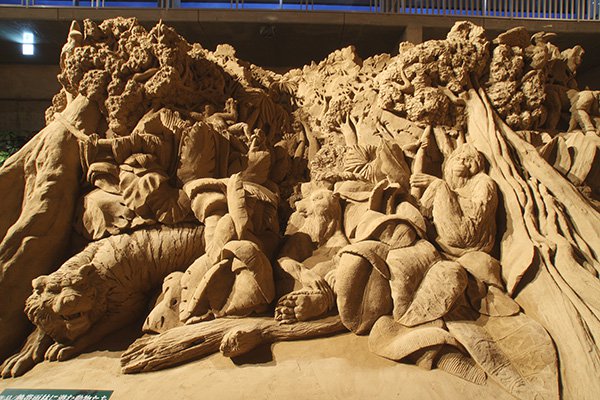
Animals which lurk in the rain forest
There are many different kinds of animals living in the hot and humid rainforests of Southeast Asia. According to the theory of continental drift, animals from different shifting continents moved to this region and thrived in harmony. However, due to excessive hunting and the development of civilization there are now species in danger of extinction, such as the clouded leopard or the Sumatran rhinoceros.
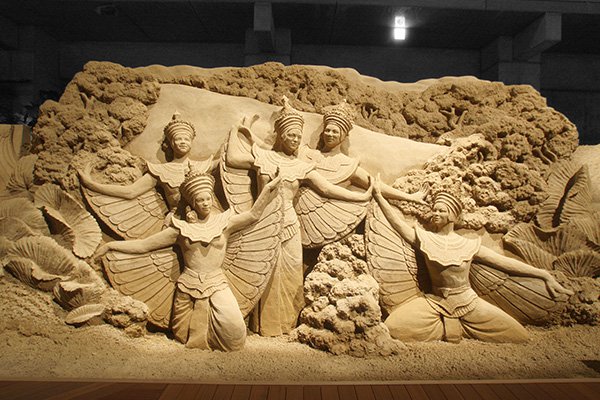
Dance which is offered to King
Court dance traditions exist all over Southeast Asia. Ancient Malaysian court dances, Balinese dances and the Cambodian Apsara Dance are widely known and continue to be valued as traditional arts. Some of these dances were offered to gods, performed in theater plays or coordinated as prayers for good harvest. The fascination of these magical and graceful dance movements even inspired artwork of famous French sculptor Rodin.
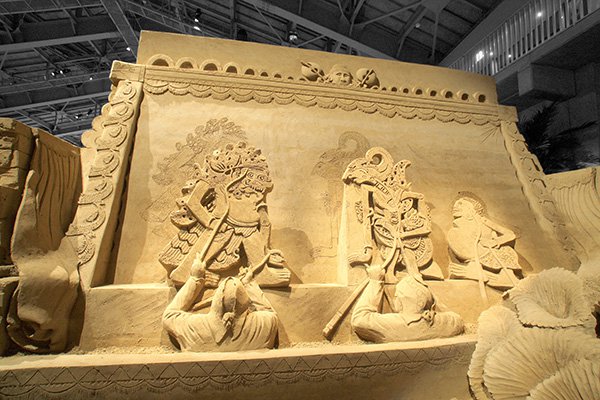
Shadow play -Wayang Kulit-
Shadow plays using marionettes are performed in many countries, but Indonesia's Wayang Kulit is one of the best known examples. Plays are enacted by putting a light source behind the puppets to cast their shadows on a screen. The plays serve a religious function and are performed at festivals and weddings. Wayang Kulit has been designated as an Intangible Cultural Heritage in 2009. Even today, its stories based on Hindu epics and their world of legends remain alive in the minds and hearts of the spectators.
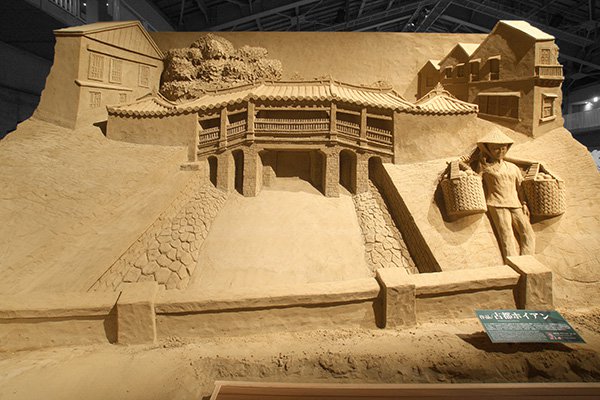
The historic town of Hoi An
Hoi An is an old harbor town located 30 km south of Da Nang in Quang Nam Province in central Vietnam. Its port thrived since the time of the Champa Kingdom and reached its high point of prosperity as a big trading center in the 17th Century. Along with Chinese settlements and Dutch trading houses, a Japanese settlement that became home to more than 1000 Japanese people were established there. The Japanese Bridge still remains to this day, bustling with tourists, as evidence of times past. The beautiful townscape of Hoi An Ancient Town was listed as a World Heritage Site in 1999.
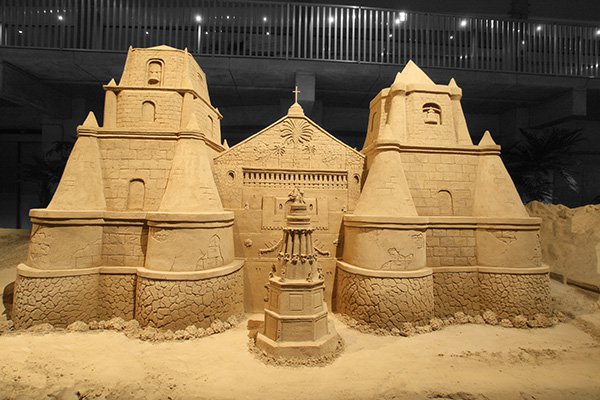
Baroque Churches of the Philippines
During the Spanish rule, Christian missionary work began and majestic Baroque churches were built in the Philippines in the 16th Century. The churches' exterior walls were decorated with reliefs of tropical plants and Oriental ornamentations. Vivid stained glass windows and religious paintings decorated the interior of these buildings. Many other traces of the long Spanish rule remain in buildings and streets to this day, and these Baroque Churches of the Philippines have been designated as a World Heritage Site in 1993.
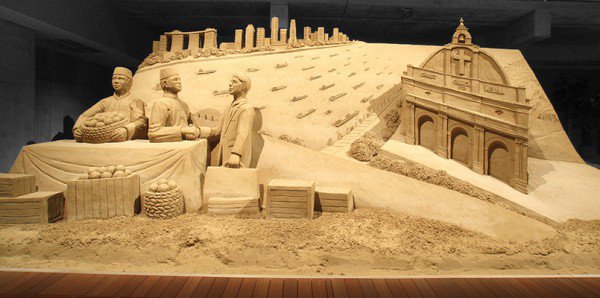
Strait of Malacca and Singapore
The Strait of Malacca runs between Singapore, Malaysia and Indonesia. It is an important shipping lane connecting the West and the East and part of the Silkroad of the Sea. The Malaysian port city, Malacca, still has a rich atmosphere of its Western colonial past. Together with George Town, Malacca was inscribed in 2008 as a joint World Heritage Site: Melaka and George Town, old cities at the southeastern tip of the Strait of Malacca is Historic Cities of the Straits of Malacca. Located Southeast of these old cities at the southeastern tip of the Strait of Malacca isSingapore. Its skyline of skyscrapers is a symbol of the development of modern Southeast Asia.
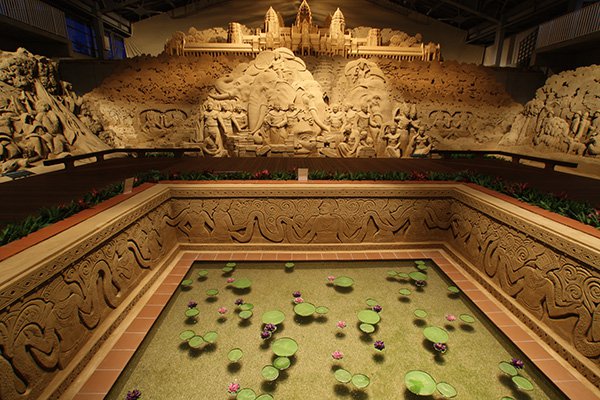
Ritual baths
Ritual baths generally describe the act of purification by cleansing a part or the whole body with cold or hot water. In Hinduism, bathing also serves the purpose of washing away one's sins and gaining virtue. In the corridors of Angkor Wat, remains of bathing places where pilgrims purified their bodies can be seen.
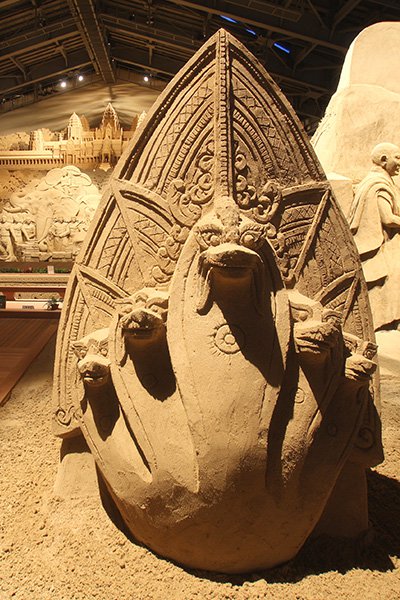
Statues of Naga
Naga is a serpent guardian deity originating from Hindu myths whose head consists of countless snakes. Statues like this are found all over the grounds of Angkor Wat. Several of them are located at the entrance, continuing to protect the temple.
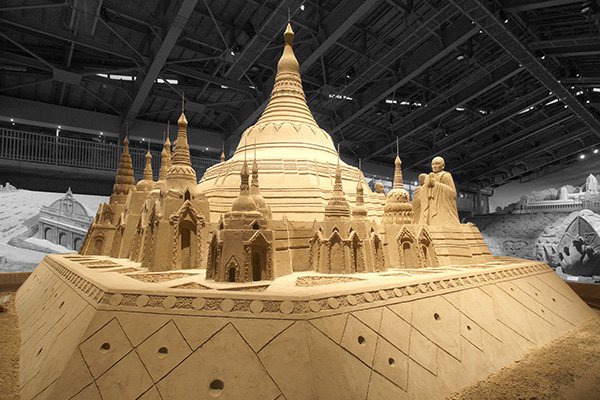
Pagoda and the Buddhist monks
A pagoda is the principal term for a Buddhist tiered tower and it is said that a Buddha was reincarnated there. Shwedagon Pagoda in Yangon, Myanmar, is believed to have been built about 2500 years ago. Its golden shape has an overwhelming presence and its original form was reconstructed in the 15th Century. Such pagodas are a symbol of the faith and an integral part of the lives of the people of Myanmar, a pious, mainly Theravada Buddhist country since old times.
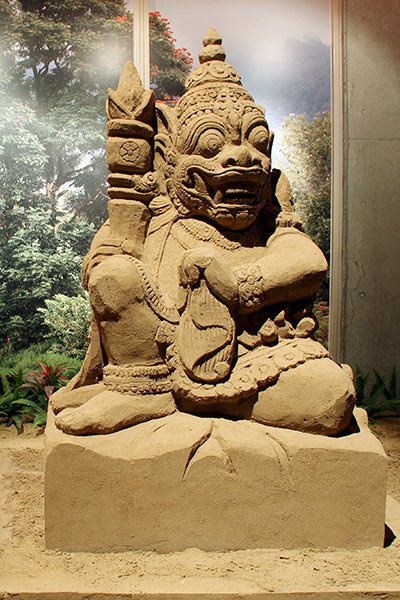
Balinese Hindu Guardian Deity
Most people in Bali are Balinese Hindu. Since ancient times, traditional beliefs in Bali melded with Hinduism and Indian Buddhism. Mother Temple of Besakih and Taman Ayun Temple are some of the well known temples. With the protection of Balinese Hindu deities, the exoctic atmosphere and beautiful temple sceneries of the island attract many tourists.
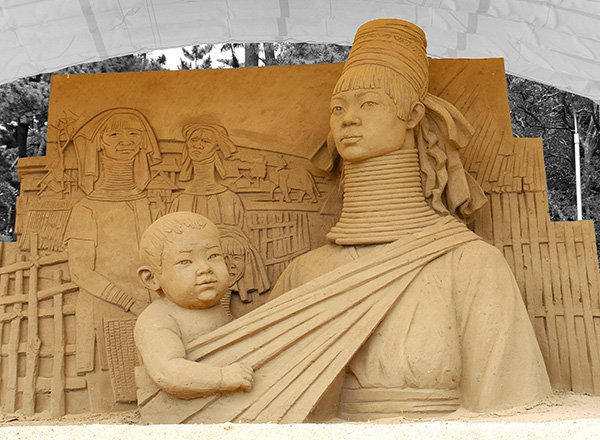
Ethnic Minority
Southeast Asia is home to ethnic groups with many different languages and cultures. Groups with comparatively small populations in relation to a country's ethnic majority are called ethnic minorities. Their villages and towns are mostly located in mountainous areas scattered all over Southeast Asia. Long necks with beautiful ornaments are characteristics of an ethnic group called Padaung people who are often talked about in Japan.
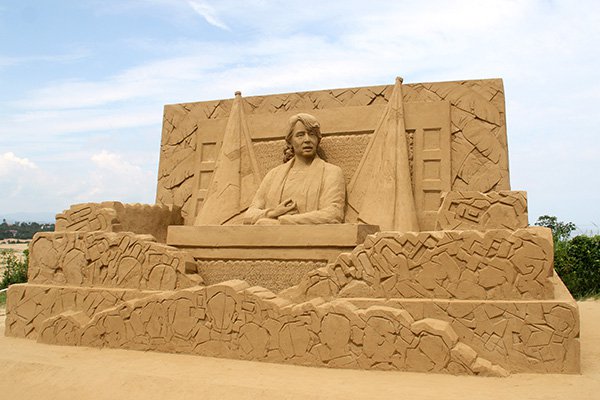
Aung San Suu Kyi
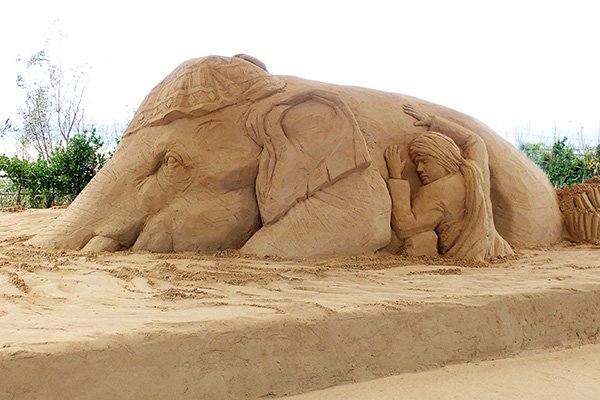
The Legend of the White Elephant
